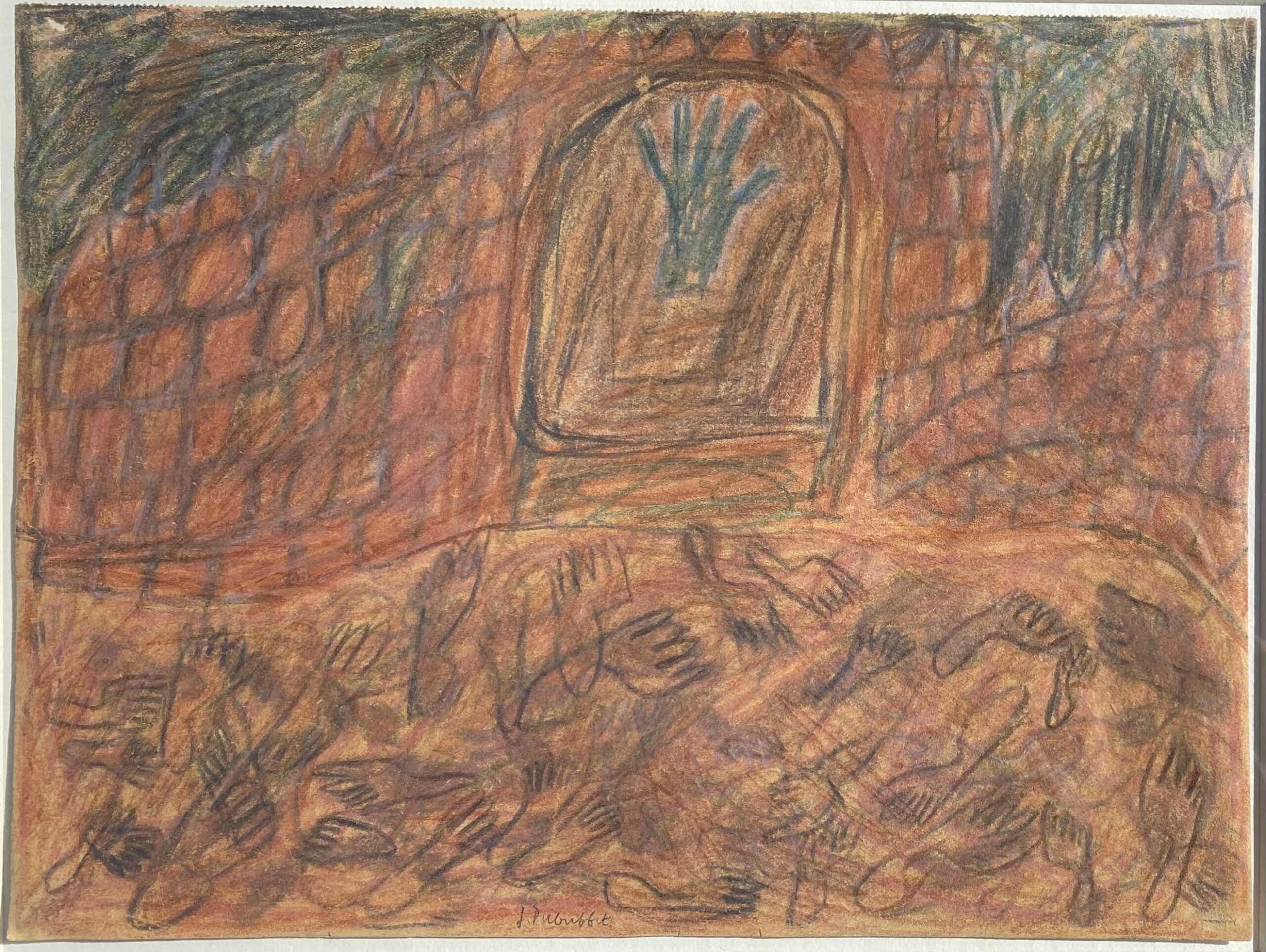Biography
Jean Philippe Arthur Dubuffet was a French painter, sculptor, collage and action artist and counts among the most prominent representatives of French post-war art. Dubuffet was also an influential art writer; he coined the term Art brut.
Jean Dubuffet was born in Le Havre as the son of an upper middle-class family of wine merchants. As a student, he took evening classes in drawing at the École des Beaux-Arts in Le Havre in 1916; after graduating from high school in 1918, he went to Paris to study literature, language and music at the Académie Julian. Here he met Max Jacob in 1919. In the twenties he painted figurative compositions in the circle of the Paris Surrealists, but soon gave up art. After a long creative break, during which he worked as a wine merchant, he began again in 1942 with naive paintings; his first solo exhibition took place in 1944 at the Galerie René Drouin in Paris. In the early post-war period, he caused a scandal with his “primitive” material paintings, but soon gained international fame, especially in the USA. There he exhibited at the Pierre Matisse Gallery in New York already in 1947.
Dubuffet developed the concept of an anti-intellectual art, which he called Art brut. He also defended this concept in art theory in texts and lectures. In 1949 he published his manifesto L’Art brut préféré aux arts culturels. His early paintings are inspired by the visual vocabulary of children, naive and mentally ill people, who for him are the artists of Art brut. Inspired by the graffiti photographs of Brassaï, Dubuffet explored the theme of the wall and the graffiti carved into it. The “physical-material production process ” of the wall and the graffiti was important to him. He therefore tried to recreate the process of the wall’s creation on canvas by applying many layers of paint thickly and giving them time to react. Graffiti was even technically reproduced as carvings in the oil paint on the canvas, thus combining trivial and high art, resulting in a positive re-evaluation of graffiti, which has many parallels with the brut style.
At the same time, he experimented intensively with printmaking: woodcut (Ler dla campane, 1948) and lithography (Les murs, 1945). He first worked on the lithographs in the Fernand Mourlot workshop in Paris (Matière et mémoire, 1945) and set up his own studio in 1958; his extensive cycle Les Phénomènes (1958/1959) is outstanding. After 1962 Dubuffet developed his series Hourloupe, cell-like structures limited to the colours red, white, black and blue. In the late 1960s he transferred the graphic elements of the Hourloupe series into sculpture. He created painted rock-like structures made of polyester, large-format open sculptures and partly walk-in labyrinths such as Jardin d’Email (1972/1973) in the Kröller-Müller Museum in Otterlo, Netherlands. In 1959 Jean Dubuffet was a participant in documenta 2, and he also took part in documenta 3 (1964) and documenta 4 (1968) in Kassel.
With Coucou Bazar in 1972, Dubuffet created a total work of art consisting of painting, sculpture, theatre, dance and music. Several costumed figures interact with each other as well as with the stage elements. This spectacle was produced only three times: in New York and Paris in 1973 and in Turin in 1978. The last production was recorded on film. For conservation reasons, however, Coucou Bazar can no longer be performed as a whole today. Two costume figures may still be moved and were on view in the Fondation Beyeler exhibition in 2016.
In 1984 he created a series of works on a black background and in the last year of his life he wrote an autobiography.
His works are represented in numerous international museums; during his lifetime Dubuffet donated large work complexes to the Musée des Arts décoratifs in Paris and the Stedelijk Museum in Amsterdam. His estate is administered by the Fondation Dubuffet in Paris, where you can visit his former studio in 137, rue de Sèvres. In the second seat of the foundation in Périgny-sur-Yerres you can see, among other things, Dubuffet’s large walk-in sculpture Closerie Falbala (1,610 m²).
In addition to his art, Dubuffet was influential because of his commitment to Art Brut: the creations of the mentally ill, social outcasts and peculiar people that he collected and promoted. Because of the background of this interest, he also visited Hans Prinzhorn’s extensive collection of pictorial works by mentally ill people in Heidelberg. Dubuffet’s Art Brut collection is today kept in the Collection de l’Art Brut in Lausanne.

